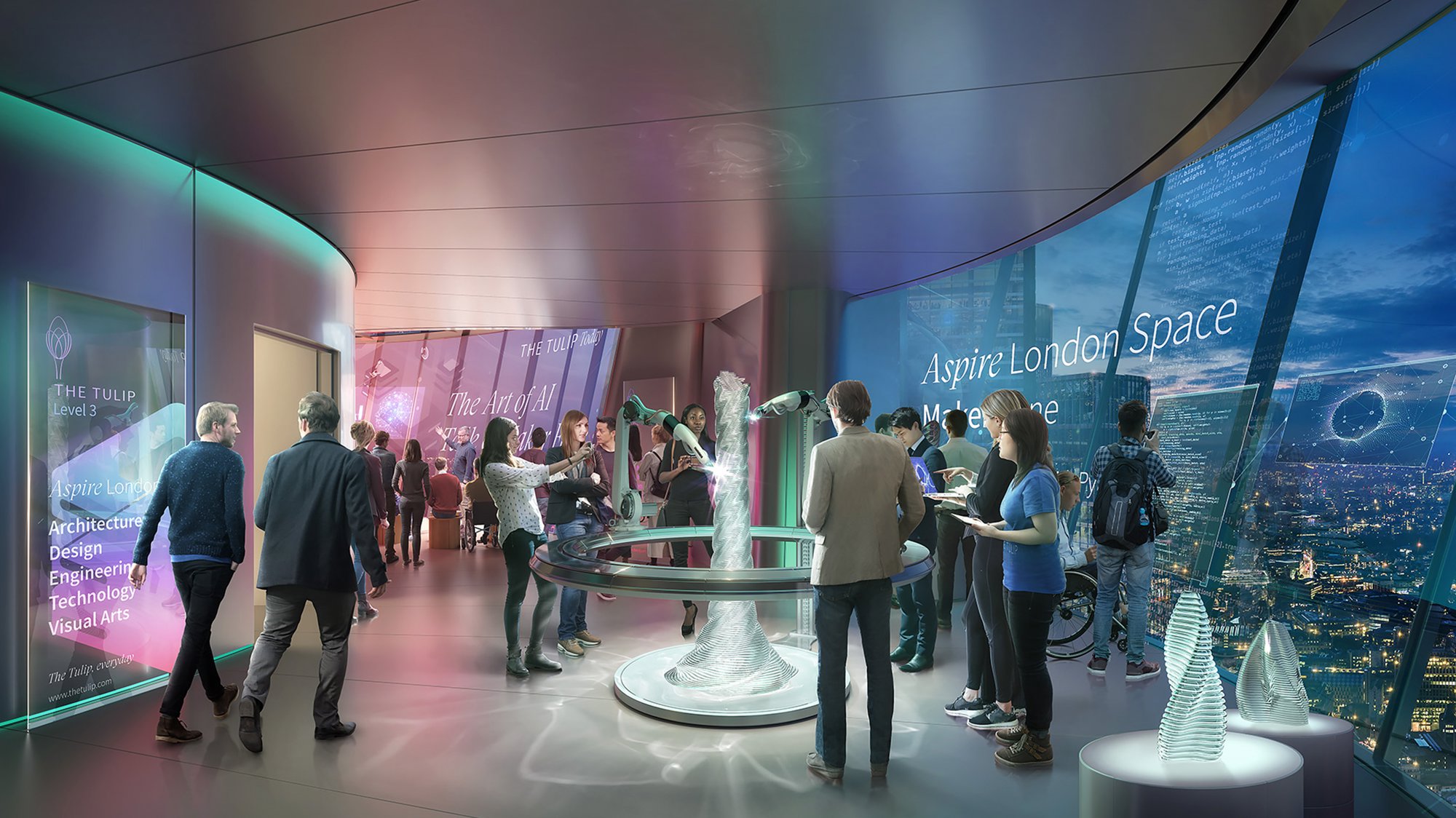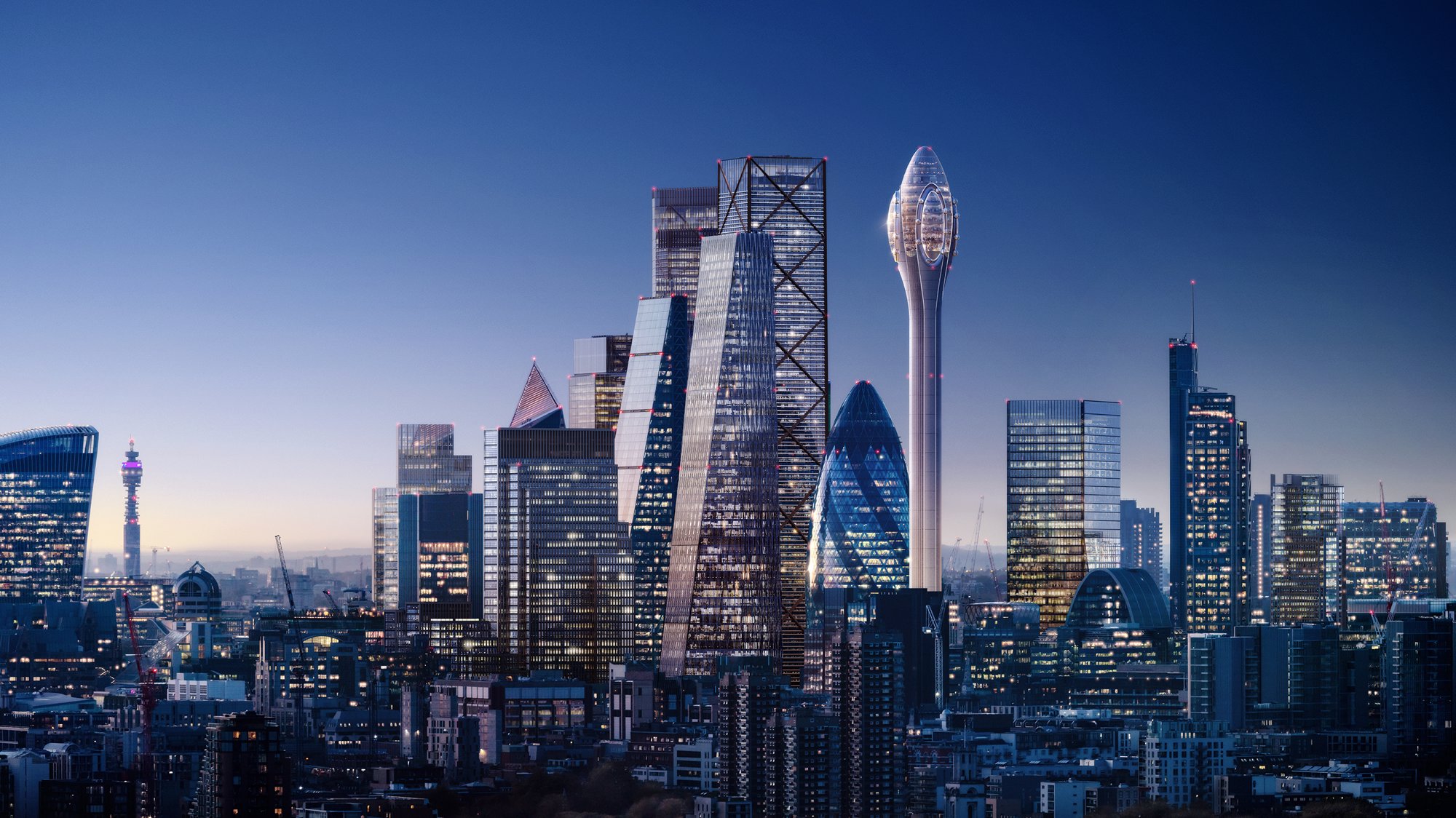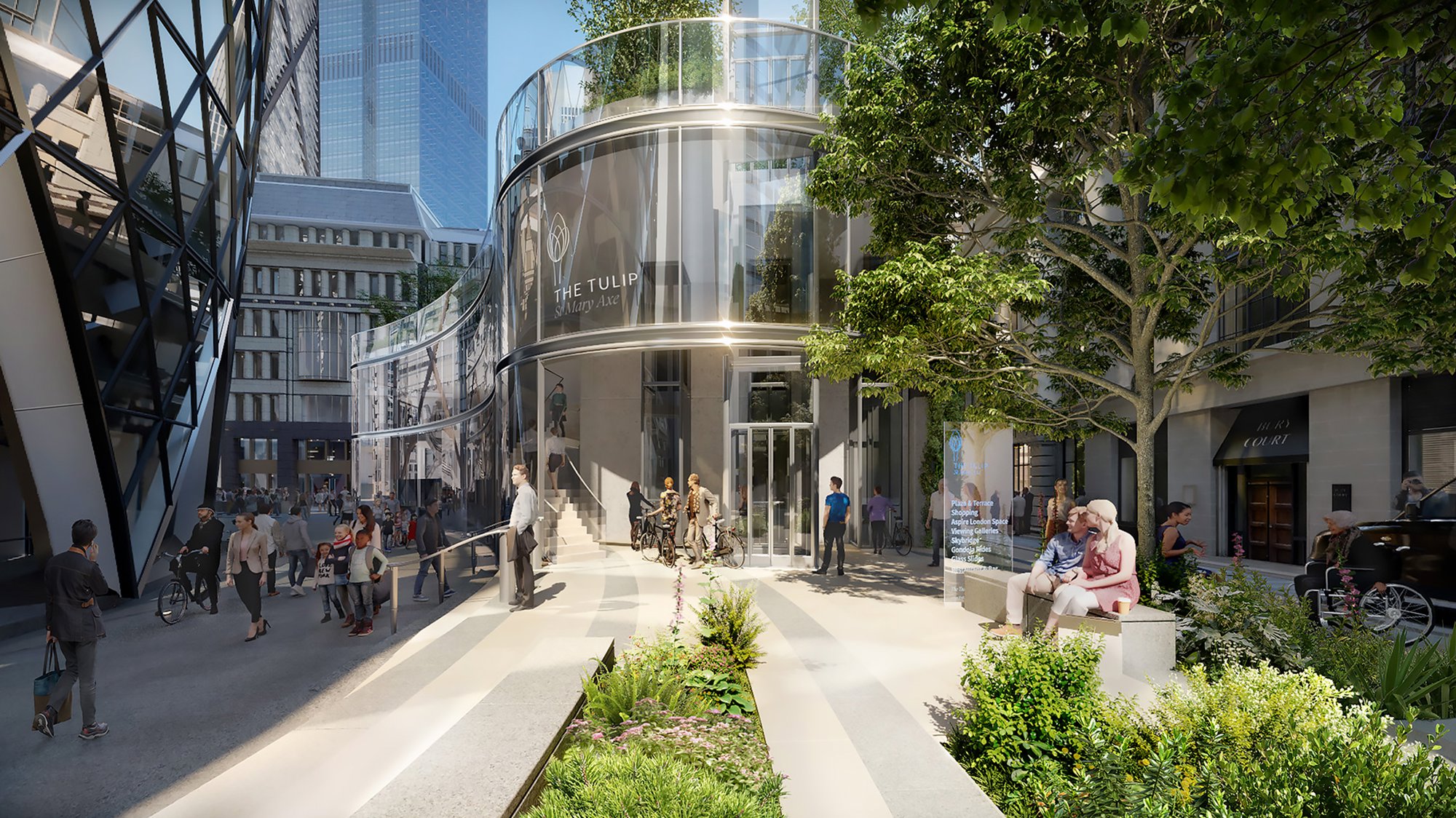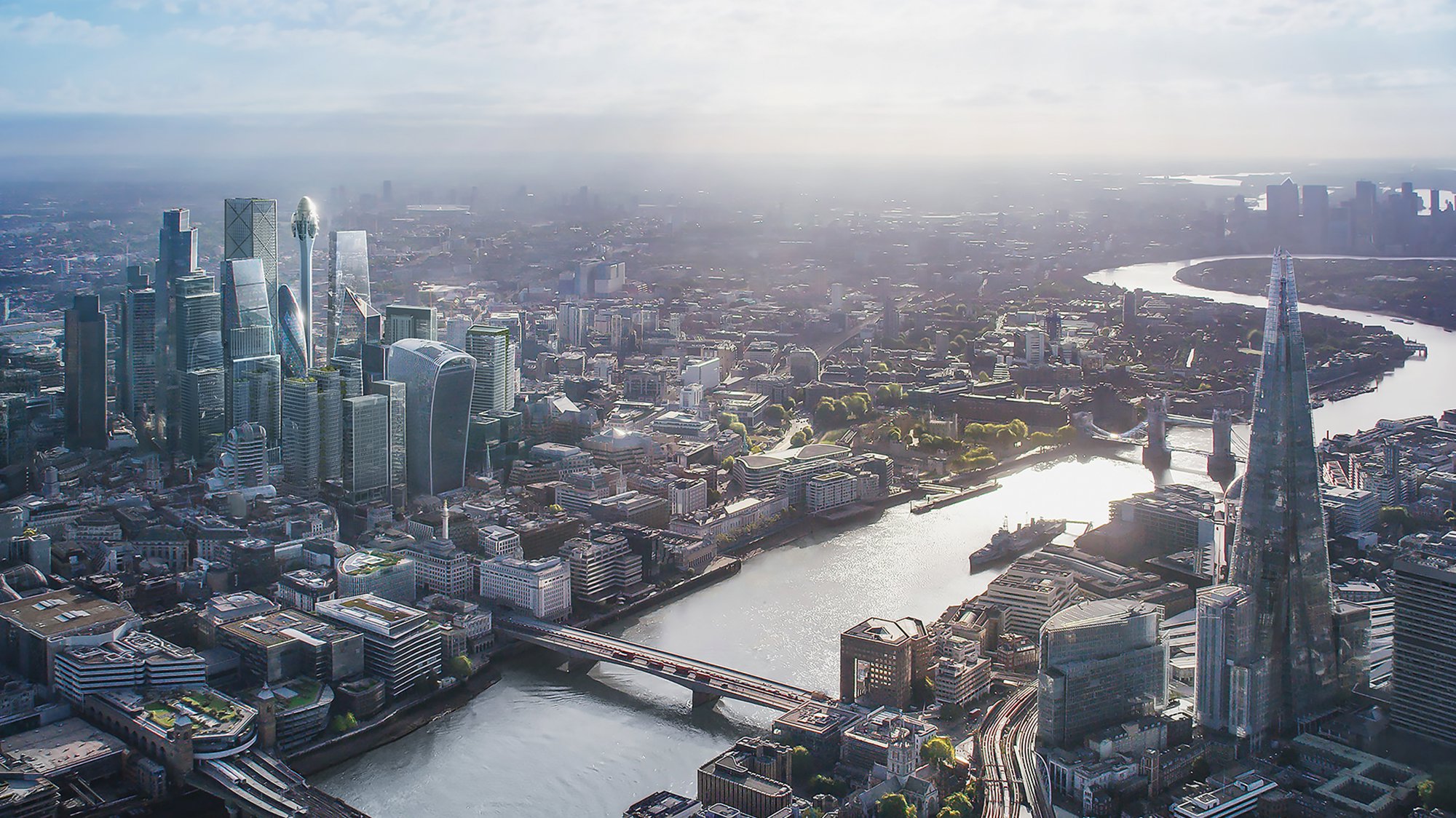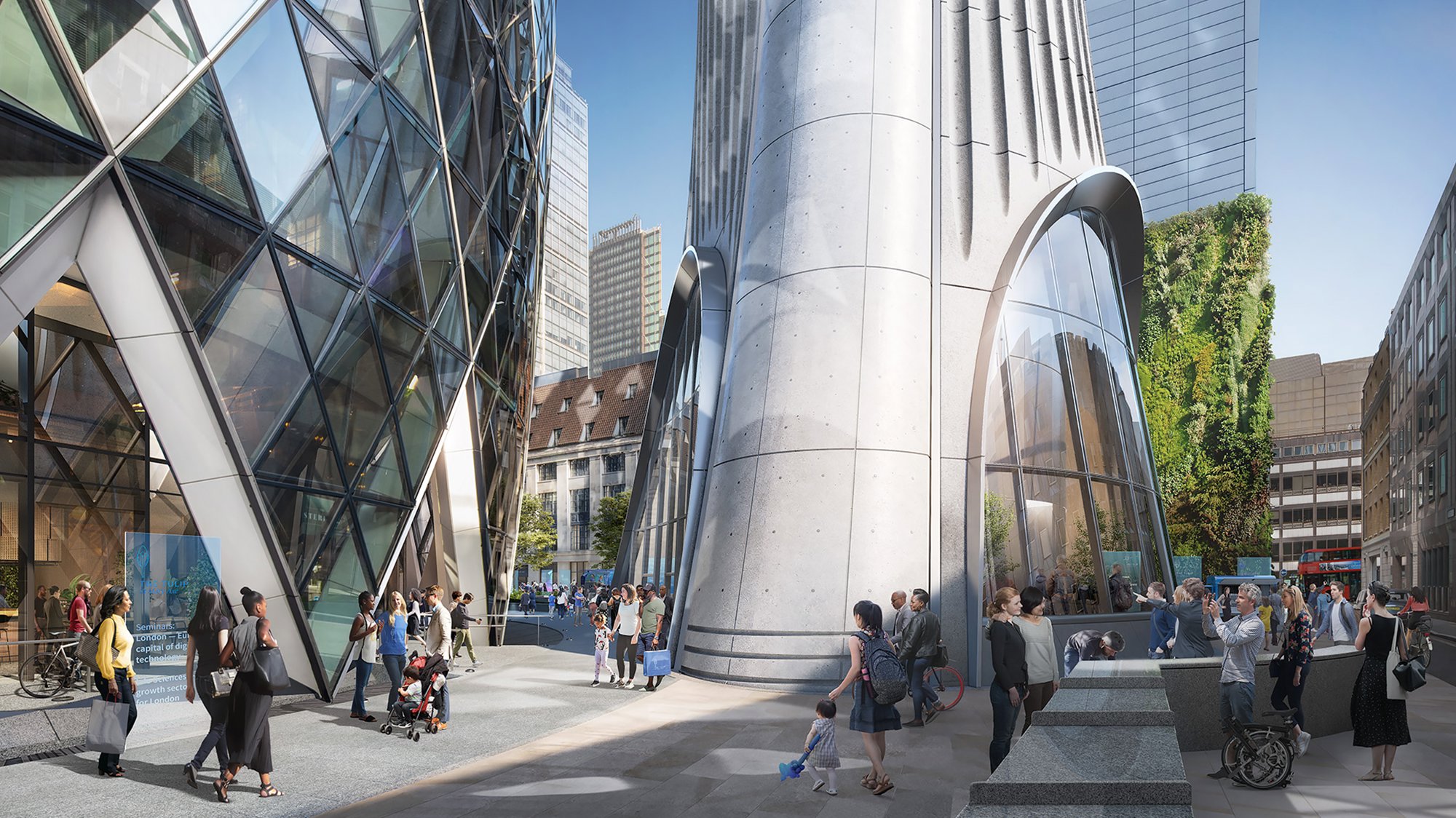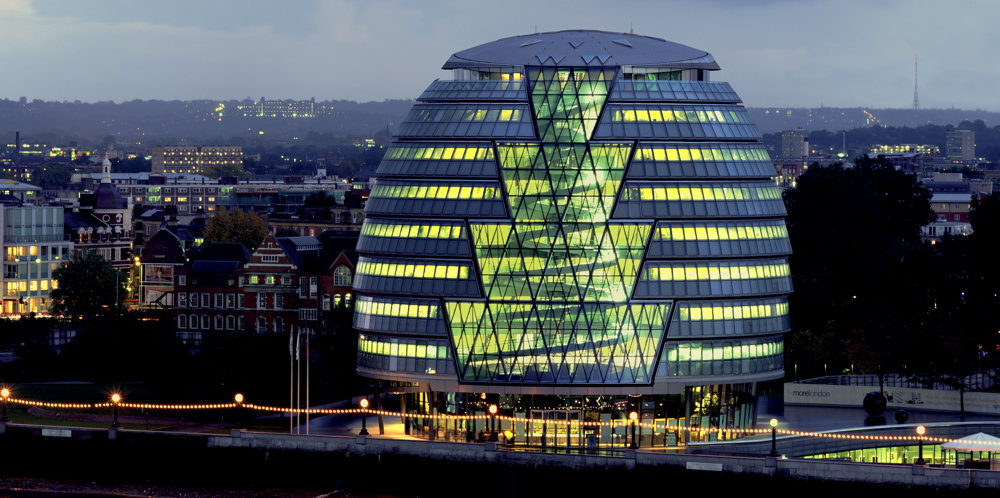View the 360 tour
At the start of the Millennium, 30 St Mary Axe marked the emergence of the new skyline of the City of London. It became one of the most cherished and recognisable icons of the city and a symbol of London’s status as a global capital. As well as being the city’s first ecological tower, it illustrated how an office building can make a positive contribution to the city at ground level by creating a new plaza and drawing life to the surrounding urban fabric.
Over the years, London’s skyline has matured with several new high-rises that reflect its growth as a global financial hub. The City of London’s drive to create and preserve public space in the Square Mile has encouraged many of these buildings to engage with the surrounding urban environment through public art, roof gardens and a vibrant programme of public events throughout the year.
The Tulip emerged from a desire to take public engagement with the city to a new level, offering a rich programme of visitor attractions and spaces for learning that would have created a new state-of-the-art cultural, educational and community resource for the City. While most buildings in the City of London are office towers that include a small allocation of retail or public space, The Tulip was envisaged as a unique destination that is wholly dedicated to London.
Rising to a height of 305 metres, The Tulip sought to provide an unparalleled vantage point to view its surroundings. The viewing platform offered visitors an engaging and enthralling ‘once-in-a-lifetime’ curated experience with sky bridges, internal glass slides and gondola-pod rides on the building’s façade that appealed to people across all age groups. Complementing the experience was a sky bar and restaurant with unmatched 360-degree views of the city.
A fundamental target for the project was to find a meaningful way to give something back to Londoners. While the unique viewing experience played a key role in enhancing the City’s cultural and entertainment offering, The Tulip looked to also provide a substantial learning platform for future generations by offering the ‘best classrooms in the city’ for London’s schoolchildren and local community groups. This free educational resource offered curated content that was tailored to the national curriculum, using state-of-the-art tools to bring various facets of the City to life, inspiring the creative young minds of tomorrow.
Following on from the environmental ambitions of 30 St Mary Axe, sustainability remained a central focus for The Tulip. The building was designed to use zero combustion sources and would have been carbon neutral during operation; 100 per cent of the external landscaping’s irrigation was to be provided by rainwater falling on the building which, along with the use of recycled greywater, cut the building’s water demand in half. The beautiful public park, landscaped roof terrace of the Pavilion and substantial green walls at either end of Bury Court would have provided a nearly ten-fold increase in the site’s green space.
Through its form and function, The Tulip sought to provide a perfect complement to one of London’s most treasured icons, while giving the city a popular new cultural destination and an unmatched educational resource for the future. The application for planning permission for The Tulip was refused by the Secretary of State for Levelling Up, Housing and Communities in 2021.









